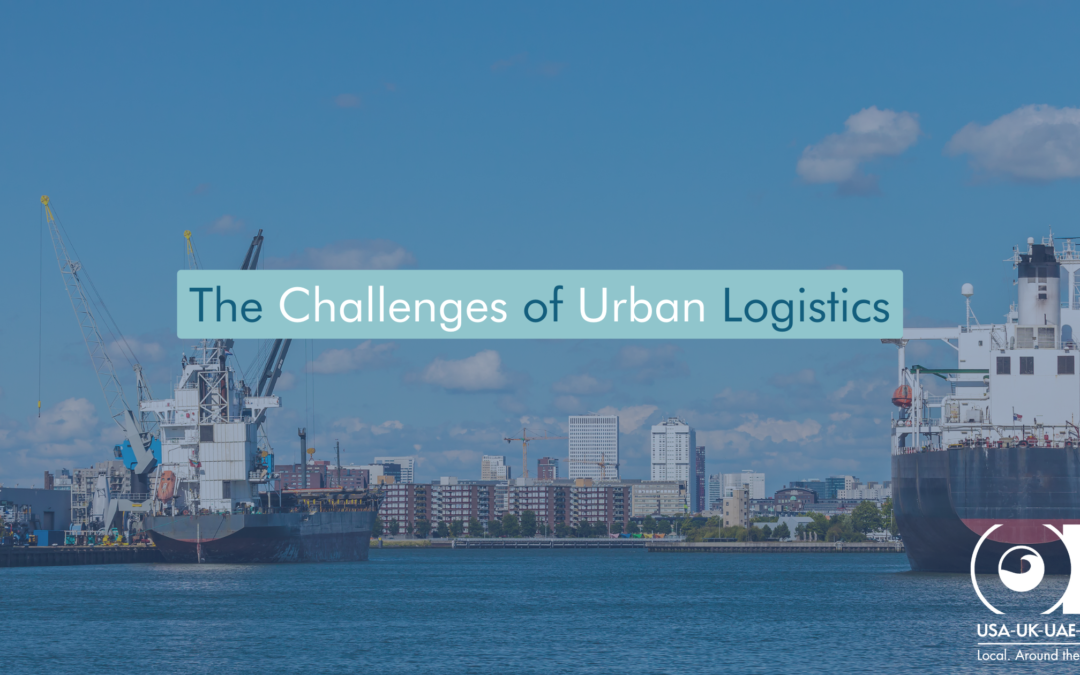
The Challenges of Urban Logistics
Urban logistics is a critical aspect of the supply chain that focuses on delivering goods to densely populated city centers. It plays a pivotal role in ensuring that products reach their intended recipients efficiently and on time. However, the nature of urban environments poses unique challenges for logistics operations.
In densely populated areas, the challenges of urban logistics are numerous. The very characteristics that make cities vibrant and bustling, such as high population density and limited space, can make the delivery process complex and demanding. From navigating congested roadways to finding suitable parking spots, logistics providers face myriad obstacles that require innovative solutions to overcome.
Challenge 1: Navigating Congested Roadways and Limited Parking
One of the primary challenges in urban logistics is the impact of traffic congestion on delivery operations. City centers are notorious for their congested roads, which can significantly slow down delivery vehicles and increase transit times. Delivering goods in a timely manner becomes a juggling act, with logistics providers striving to find the most efficient routes amidst the sea of traffic.
To tackle this challenge, alternative modes of transportation for last-mile deliveries have emerged as promising solutions. Electric bikes, scooters, and even drones have gained popularity due to their agility and ability to bypass traffic congestion. These eco-friendly options not only help overcome the challenges of congested roadways but also contribute to reducing carbon emissions, promoting sustainability in urban logistics.
Moreover, the use of real-time route optimization software has revolutionized delivery operations in city centers. This advanced technology takes into account real-time traffic data, road closures, and other variables to determine the most efficient routes for delivery vehicles. By optimizing the routes, logistics providers can minimize the time spent on congested roads and ensure prompt deliveries to customers.
Challenge 2: Limited Availability of Loading and Unloading Spaces
Finding suitable parking and unloading areas in urban centers can be a daunting task for logistics providers. With limited space and high demand, securing designated spots for delivery vehicles can be a real challenge. This scarcity of loading and unloading spaces further complicates the already intricate urban logistics landscape.
To address this challenge, innovative solutions have been implemented. Many cities have started designating dedicated delivery zones to streamline the process. These zones provide designated areas where delivery vehicles can park and unload goods without obstructing traffic flow. Additionally, time-slot restrictions for deliveries have been introduced to regulate the flow of vehicles and minimize congestion during peak hours.
Another emerging trend is the use of smart lockers and parcel pick-up points. These alternative delivery options allow customers to collect their packages from conveniently located lockers or collection points, eliminating the need for traditional door-to-door deliveries. By leveraging technology and strategically placing these pick-up points, logistics providers can enhance efficiency and convenience while reducing the strain on parking and unloading spaces.
Challenge 3: Environmental Sustainability
Environmental sustainability has become a pressing concern in urban logistics. The high concentration of delivery vehicles and the associated emissions pose significant challenges to air quality and contribute to carbon footprint. Recognizing the need for greener practices, logistics providers are actively pursuing environmentally friendly solutions.
One approach is the adoption of electric or hybrid vehicles for delivery operations. These vehicles offer lower emissions and quieter operation, reducing the environmental impact of logistics activities in urban areas. Additionally, some cities are exploring the concept of zero-emission zones, which restrict or prohibit vehicles with high emissions from entering certain areas. By encouraging the use of clean vehicles, cities can create a healthier and more sustainable urban logistics ecosystem.
Furthermore, the potential of autonomous delivery vehicles is being explored. These self-driving vehicles have the potential to optimize routes, reduce congestion, and minimize emissions. By leveraging advanced technology and machine learning algorithms, autonomous vehicles can navigate urban environments more efficiently, contributing to both environmental sustainability and operational efficiency. Consolidating shipments and implementing efficient route planning also play a crucial role in reducing carbon emissions by minimizing the distance traveled and maximizing delivery density.
Challenge 4: Ensuring Safety and Security
Densely populated areas can present increased risks for theft and damage to shipments. With a higher concentration of people and bustling activity, the potential for unauthorized access or pilferage is elevated. This necessitates robust safety and security measures to protect goods throughout the delivery process.
Advanced tracking technologies have emerged as a valuable tool in enhancing shipment visibility and traceability. By leveraging GPS tracking, barcodes, or RFID tags, logistics providers can closely monitor the movement of packages and promptly address any security concerns. Real-time tracking not only provides peace of mind for both businesses and customers but also enables quick intervention in case of theft or damage.
Moreover, secure access points at delivery locations are vital for ensuring the safety of both the delivery personnel and the goods. Gated entry systems, access codes, or designated drop-off points with controlled access can help mitigate the risk of theft or unauthorized handling of shipments. By establishing secure protocols, logistics providers can instill confidence in their customers and protect valuable goods.
Urban logistics presents a range of challenges that require innovative solutions. Limited availability of loading and unloading spaces necessitates the adoption of dedicated delivery zones and alternative delivery options like smart lockers. Environmental sustainability calls for the use of electric or hybrid vehicles, exploration of zero-emission zones, and efficient route planning. Ensuring safety and security involves leveraging tracking technologies and implementing secure access points. By addressing these challenges head-on, logistics providers can navigate the complexities of urban logistics and deliver goods efficiently and securely in densely populated city centers.


